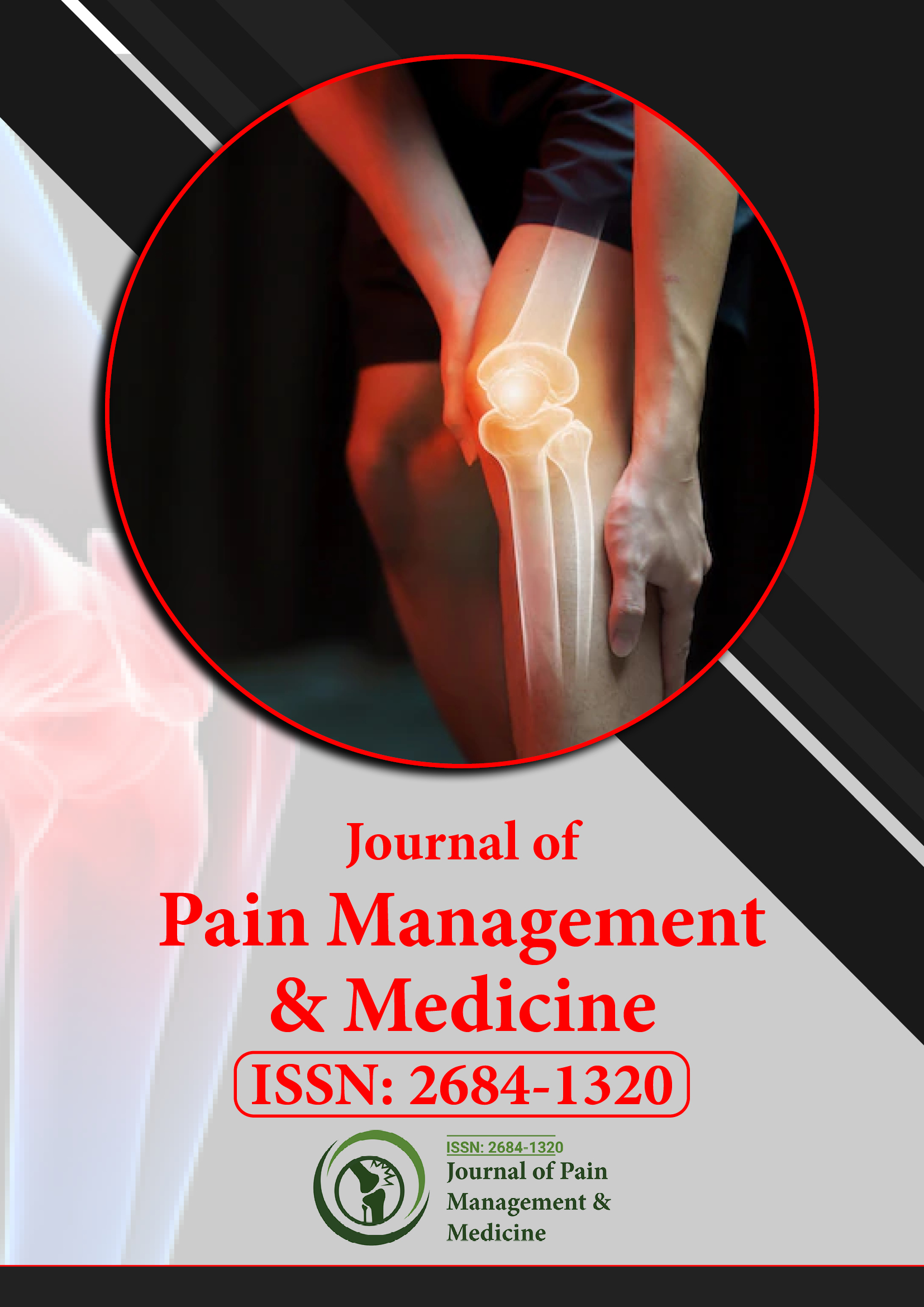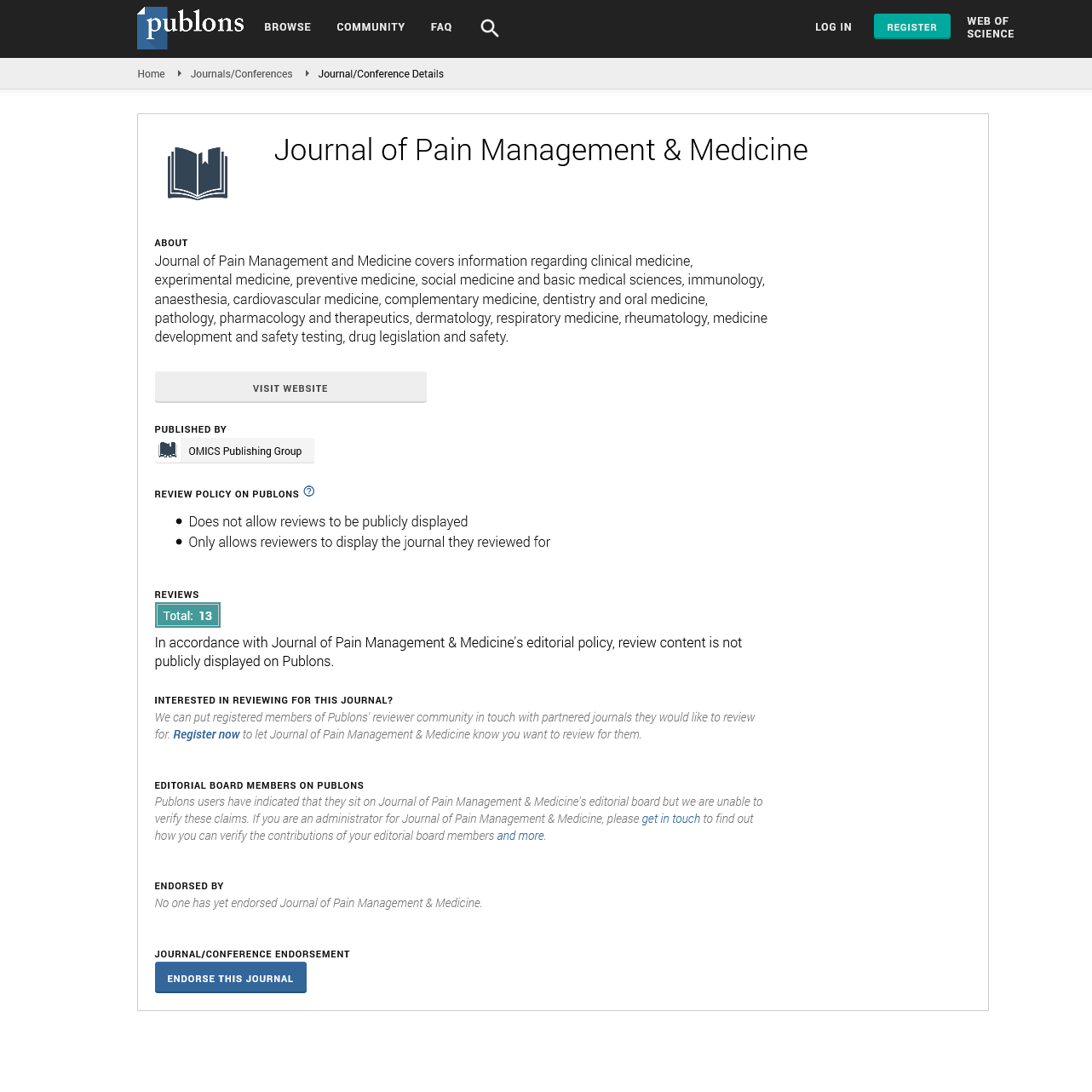Indexed In
- RefSeek
- Hamdard University
- EBSCO A-Z
- Publons
- Euro Pub
- Google Scholar
- Quality Open Access Market
Useful Links
Share This Page
Journal Flyer

Open Access Journals
- Agri and Aquaculture
- Biochemistry
- Bioinformatics & Systems Biology
- Business & Management
- Chemistry
- Clinical Sciences
- Engineering
- Food & Nutrition
- General Science
- Genetics & Molecular Biology
- Immunology & Microbiology
- Medical Sciences
- Neuroscience & Psychology
- Nursing & Health Care
- Pharmaceutical Sciences
Opinion Article - (2025) Volume 11, Issue 2
Algorithmic Crystal Ball: Harnessing AI to Prevent the Shadow of Chronic Post-Traumatic Pain
Natalia V. Petrova*Received: 01-Mar-2025, Manuscript No. JPMME-25-28853; Editor assigned: 03-Mar-2025, Pre QC No. JPMME-25-28853 (PQ); Reviewed: 17-Mar-2025, QC No. JPMME-25-28853; Revised: 24-Mar-2025, Manuscript No. JPMME-25-28853 (R); Published: 31-Mar-2025, DOI: 10.35248/2684-1320.25.11.321
Description
Trauma, whether physical or psychological, can leave an indelible mark. While the immediate aftermath demands urgent medical attention, the insidious development of chronic pain in the months and years following trauma represents a significant and often overlooked public health challenge. The transition from acute post-traumatic pain to a persistent, life-altering condition is a complex process, influenced by a myriad of biological, psychological, and social factors. Now, the burgeoning fields of Artificial Intelligence (AI) and Machine Learning (ML) offer a tantalizing prospect: the ability to predict, with increasing accuracy, which individuals are at high risk of developing this debilitating chronic pain. Embracing this algorithmic crystal ball could revolutionize our approach to post-traumatic care, shifting from reactive management to proactive prevention.
The potential benefits of leveraging AI/ML in this context are profound. Imagine a system that, upon a patient's presentation following a traumatic event – be it a motor vehicle accident, a workplace injury, or even a significant emotional trauma – could analyze a vast array of data points to generate a personalized risk score for developing chronic pain. This data could encompass initial pain severity, injury type and location, pre-existing conditions, psychological profiles (including anxiety, depression, and catastrophizing tendencies), genetic predispositions, and even social determinants of health. By sifting through these complex interactions, AI/ML algorithms could identify subtle patterns and high-risk profiles that might escape the notice of even the most experienced clinicians.
This predictive capability would empower clinicians to implement targeted preventative strategies early in the recovery process. For individuals flagged as high-risk, interventions such as early and intensive psychological support, tailored pain education programs, proactive physical therapy focusing on functional restoration rather than solely pain relief, and judicious use of specific pharmacological agents could be initiated. This proactive approach, delivered during the critical window of neuroplasticity following trauma, has the potential to disrupt the transition to chronic pain pathways before they become entrenched.
Furthermore, AI/ML could contribute to a more nuanced understanding of the underlying mechanisms driving the chronification of post-traumatic pain. By identifying the most influential predictors within large datasets, researchers could gain valuable insights into the complex interplay of factors involved. This knowledge could, in turn, inform the development of novel therapeutic targets and interventions aimed at addressing the root causes of chronic post-traumatic pain.
However, the integration of AI/ML into this sensitive area is not without its challenges and ethical considerations. Data privacy and security are paramount. The vast amounts of personal and medical information required to train these algorithms must be handled with the utmost care and in strict adherence to ethical guidelines. Transparency and explainability of the AI models are also crucial. Clinicians need to understand the factors driving the risk predictions to ensure trust and facilitate informed decision-making. The "black box" nature of some complex ML algorithms could hinder clinical acceptance if the reasoning behind the predictions remains opaque.
Moreover, we must be vigilant against the potential for bias in the data used to train these AI/ML models. If the datasets disproportionately represent certain demographic groups or fail to capture the full spectrum of traumatic experiences, the resulting algorithms could perpetuate existing health disparities. Ensuring fairness and equity in the development and deployment of these predictive tools is essential to avoid exacerbating inequalities in pain management.
The implementation of AI/ML in this context should also augment, not replace, the crucial role of clinical judgment and the patient-physician relationship. While AI can provide valuable insights and risk assessments, the human element of empathy, communication, and individualized care remains indispensable. The algorithmic crystal ball should serve as a powerful tool to inform clinical decision-making, but the final judgment and the therapeutic alliance must remain at the heart of patient care.
In conclusion, the application of artificial intelligence and machine learning to predict patients at high risk for developing chronic pain after trauma holds immense promise for transforming post-traumatic care. By harnessing the power of data analysis, we can move towards a future where preventative strategies are implemented proactively, potentially sparing countless individuals from the debilitating burden of chronic pain. However, realizing this potential requires a thoughtful and ethical approach, prioritizing data privacy, transparency, fairness, and the continued importance of human clinical expertise. The algorithmic crystal ball offers a glimpse into a brighter future for trauma survivors, but it is our responsibility to wield it wisely and responsibly.
Citation: Petrova NV (2025) Algorithmic Crystal Ball: Harnessing AI to Prevent the Shadow of Chronic Post-Traumatic Pain. J Pain Manage Med. 11.321.
Copyright: © 2025 Petrova NV. This is an open access article distributed under the terms of the Creative Commons Attribution License, which permits unrestricted use, distribution, and reproduction in any medium, provided the original author and source are credited.

